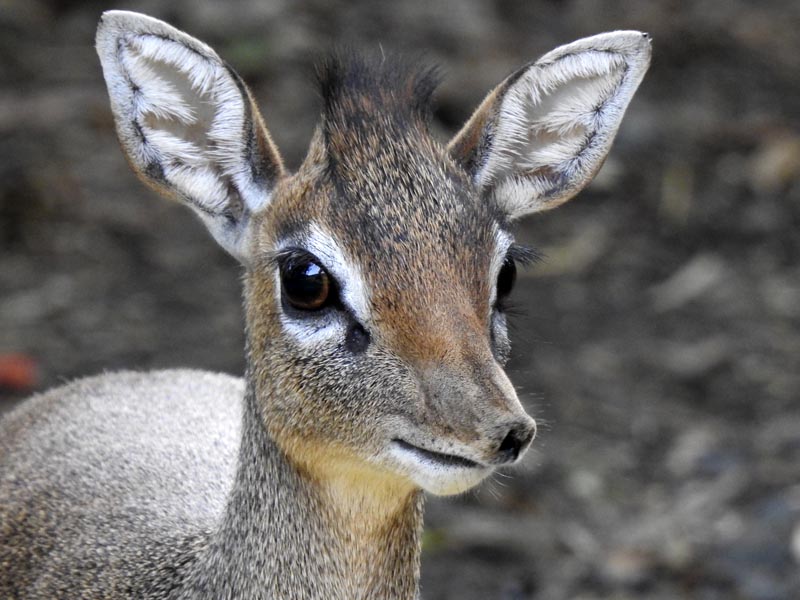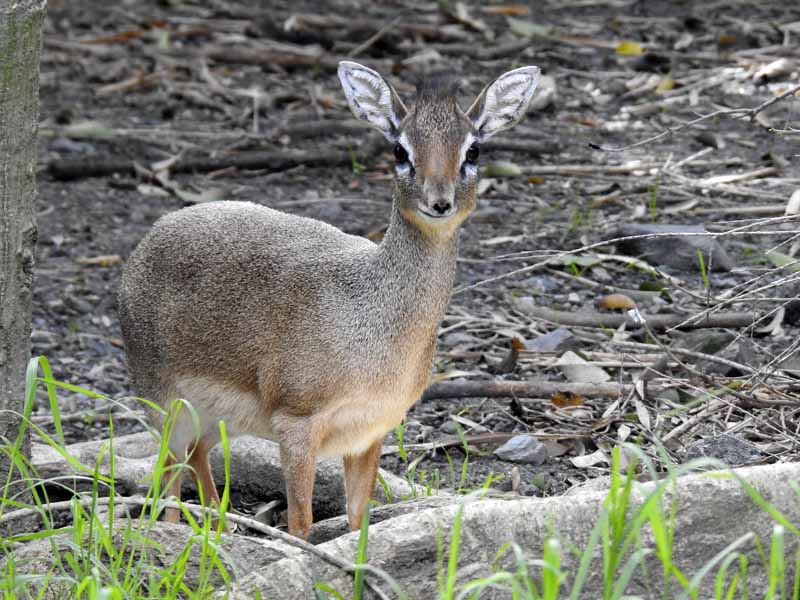The Kirk's dik-dik (Madoqua kirkii) is considered the second smallest antelope in Africa, at just 70 centimetres in total height and weighing approximately five kilos. It gets its name because the females emit the peculiar alarm sound ‘zik-zik’ or ‘dik-dik ’ as they zigzag away when they feel threatened, although both sexes emit high-pitched whistles warning of the presence of predators that also serve other animals.
With yellowish-brown fur and a white belly, it shares characteristics with other antelopes, such as its short tail, the fact that males have small hollow unbranched horns, between five and ten centimetres long and with rings in their lower area, or the presence of odoriferous glands near the eyes that produce secretions with pheromones and other compounds that - among other functions - serve to express the dominance of an animal or, deposited in the vegetation, serve as a means of communication.
On the other hand, this species has singularities that make it an atypical antelope. For example, the Kirk's dik-dik has a pointed snout with a prehensile end, as if it were a small ‘trunk’ similar to that of the elephant, the anteater or some monkeys. On its forehead, it has a tuft of hair that bristles in the form of a crest when frightened or when males defend their territories or conduct courtship.
Kirk's dik-dik is monogamous and each pair occupies its own territory, where the male is more active in scent marking, although both sexes participate in this task. In addition, the male defends the territory from other species and other males, displaying aggressive behaviour with gestures of dominance or threat during the rutting season. Pair bonds are quickly established and give rise to interactions between the two sexes - infrequent - such as grooming, mutual vigilance, issuing warning calls to each other and play.
The Kirk's dik-dik uses its preorbital glands, near its eyes, to scent-mark its entire territory. The development of these scent glands demonstrates the importance of olfactory communication in their social interactions, with paired behaviours such as sniffing and licking of these scent glands, neck or back.
Scent and marking is of great importance in the so-called ‘dung ceremony’, a practice in which the dik-dik repeatedly uses piles of dung, usually marking its territory and used by different families: first, the female urinates and defecates, after which the male stands behind her and analyses her urine; as she moves away, the male sniffs the excrement, kicks vigorously and marks with urine and faeces; and finally, both sexes impregnate nearby branches with scent with their preorbital glands. They usually defecate on the dung of elephants, rhinoceroses or antelopes, although they also often sniff for information on other species without subsequently marking.
The Kirk's dik-dik is adapted to areas of low humid scrub, savannah grassland or river banks, avoiding steep terrain, and its habitat should include short grass, open clearings, a shrub layer and thickets. In this way, it satisfies its needs for a wide view, the possibility of browsing and protection from predators such as baboons, jackals, lions, cheetahs, eagles and owls.
As for its diet, it is what is known as a ‘concentrated selector’, feeding mainly on plants, leaves and fruits rich in nutrients and water, which means that it hardly needs to drink, so in the dry season it prefers plants with a higher water content, which it rejects in the wet season. In fact, the Kirk's dik-dik is one of the ungulates with the lowest daily water expenditure and has strategies for fluid accumulation and temperature regulation, both metabolically and behaviourally. In addition, the breeding season is associated with the availability of browse, coinciding with the availability of woody plants at the onset of the rainy season or fresh leaf litter at the onset of the dry season.



















